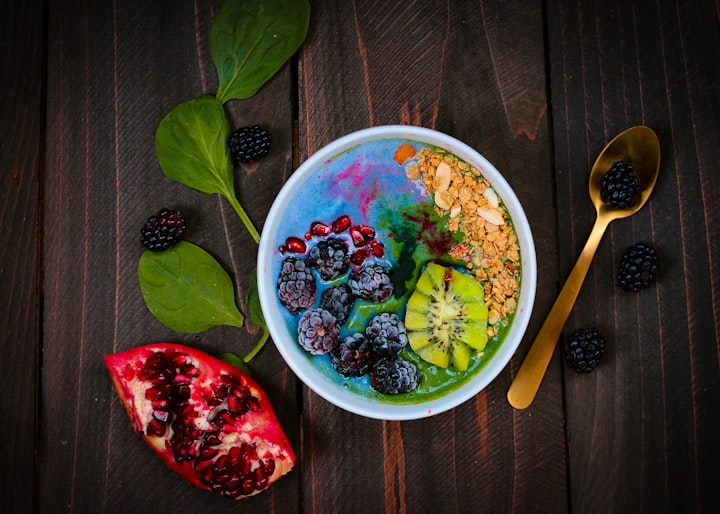The Ultimate Keto Diet Guide for Beginners
Read this article to learn more..

Are you looking for a way to lose weight, gain energy and feel healthier? Look no further than the keto diet! The keto diet has become increasingly popular in recent years, and for good reason - it’s a simple, effective way to transform your body. If you’re new to the keto diet, this guide is a great place to start. Here, you’ll find all the information you need to get started on your keto journey - from what keto foods to eat, how to monitor your progress and how to make the most of the diet.
Click this link to start your Ultimate Keto Diet now!
What is the keto diet?
The ketogenic, or “keto,” diet is a high-fat, low-carbohydrate eating plan that has become increasingly popular over the past few years. This type of diet forces the body to burn fat rather than carbohydrates for energy, resulting in weight loss and improved overall health.
Keto diets are typically composed of 75 percent fat, 20 percent protein and only 5 percent carbohydrates. This means that foods such as meat, fish, eggs, nuts, oils, and dairy are all allowed on the diet, while grains, sugary foods and most fruits are not. Eating fewer carbs can lead to a reduction in blood sugar and insulin levels, which helps the body break down stored fat and use it as fuel.
By following a keto diet, you can expect to see improved energy levels and mental clarity, better digestion, reduced hunger and cravings, and even better skin and hair health. Furthermore, by cutting down on carbs, you can potentially lose weight quickly and effectively. To get started with the keto diet, be sure to eat plenty of healthy fats from sources like avocados, olive oil, butter, ghee, coconut oil, and fatty cuts of meats. You should also try to incorporate more protein into your meals with lean proteins like chicken, salmon, grass-fed beef, and eggs. Lastly, don't forget to include non-starchy vegetables like broccoli, kale, cauliflower, spinach, peppers, mushrooms, and zucchini in your meals.
When beginning any new dietary plan it's important to speak with your doctor first. They will help determine if the keto diet is right for you and provide guidance on how to safely transition into this style of eating. Additionally, an experienced nutritionist can help you develop an individualized meal plan tailored specifically to your needs.
Why go keto?
The keto diet is an incredibly popular and effective way to lose weight and improve your overall health. It is a high-fat, moderate-protein, and low-carbohydrate diet that has been proven to have many health benefits, including weight loss, improved blood sugar levels, and improved cholesterol levels.
When done correctly, the keto diet can be an excellent tool for weight loss. Eating fewer carbohydrates means your body will burn fat for energy instead of glucose, which is the main source of energy for the body. This process, known as ketosis, increases the body’s fat-burning capacity and leads to faster weight loss. Additionally, ketosis can help reduce hunger, leading to fewer cravings and a healthier relationship with food.
The keto diet can also help improve blood sugar levels and cholesterol levels. Research has found that following a low-carbohydrate diet can help reduce insulin resistance, which can result in better blood sugar control. Furthermore, studies have shown that eating a diet high in healthy fats and lower in carbohydrates can help reduce LDL (bad) cholesterol levels while increasing HDL (good) cholesterol levels.
Overall, the keto diet is a great option for those looking to improve their overall health and lose weight. While it may seem daunting at first, with a few simple adjustments you can make the transition easier and reap the benefits of a healthy keto lifestyle.
How to start the keto diet
The ketogenic diet is one of the most popular diets in the world right now, but getting started can be a bit intimidating. Fortunately, with a little bit of planning and guidance, you can begin your keto journey with confidence!
First, you'll need to understand what a ketogenic diet is. In short, it's a low-carb, high-fat eating plan that forces your body to enter a metabolic state known as ketosis. When this happens, your body starts to burn fat for energy instead of carbs. As a result, you lose weight, become more energized and may even experience improved health markers like lowered blood pressure and cholesterol.
Once you understand the basics of the ketogenic diet, you'll want to decide how strict you'd like to be. While it's possible to get into ketosis without tracking your macros or calories, it can be helpful to do so in order to make sure you're eating enough fat and staying within your daily calorie goals.
Next, it's time to clean out your pantry. You'll want to remove all processed foods and added sugars from your diet. Instead, stock up on healthy fats, proteins and low-carb veggies. Be sure to keep track of what you eat and the macronutrient content of each meal or snack. This will help ensure that you stay on track with your keto diet.
Finally, make sure to stay hydrated and get plenty of sleep! Dehydration and sleep deprivation can both interfere with your ability to reach and maintain ketosis. Aim for eight hours of sleep per night and drink plenty of water throughout the day.
By following these tips, you can start the keto diet with confidence and make sure you are properly fueling your body for success!
What to eat on a keto diet
When it comes to following a keto diet, it can seem intimidating at first, but with some research and planning, you can make the process easier. The key to success on a keto diet is to understand what foods you can and cannot eat. Generally, on a keto diet, you should be consuming high-fat foods, moderate amounts of protein, and very few carbohydrates.
Foods to Eat:
- High-fat dairy products like cheese, heavy cream, sour cream, and yogurt
- Fish like salmon, mackerel, tuna, and trout
- Meat like beef, pork, chicken, and turkey
- Non-starchy vegetables like broccoli, cauliflower, Brussels sprouts, spinach, kale, and peppers
- Fats like olive oil, butter, ghee, coconut oil, lard, and tallow
- Nuts and seeds like almonds, walnuts, sunflower seeds, pumpkin seeds, and chia seeds
- Berries like blueberries, raspberries, blackberries, and strawberries
- Unsweetened drinks like tea, coffee, and water
Foods to Avoid:
- Grains including wheat, oats, corn, quinoa, rice, and pasta
- Sugar and sugar substitutes like honey and agave syrup
- Starchy vegetables like potatoes, sweet potatoes, carrots, beets, and squash
- Beans and legumes such as chickpeas, black beans, and kidney beans
- Fruit juices
- Alcoholic beverages
- Processed foods and snacks
By understanding what foods are appropriate for a keto diet and stocking your kitchen with these items you’ll be better prepared for success. If you’re ever in doubt about whether a food is acceptable for a keto diet or not consult your doctor or a nutritionist for guidance.
How to stick to a keto diet
If you’re determined to adopt a ketogenic lifestyle, here are some tips that will help you stay on track and stick with it.
1. Get Support – Surrounding yourself with supportive people is one of the best things you can do when trying to stay motivated and on track. Find a friend or family member who is also interested in trying out the keto diet and challenge each other to stay on track.
2. Meal Prep – Planning your meals ahead of time is key for success when it comes to eating a keto diet. Take some time each week to prepare your meals and snacks so that you’ll have them ready when hunger strikes. This will also help you stay within your daily carb limit.
3. Set Reasonable Goals – Aiming too high can lead to disappointment if you don’t meet them. Start with small goals and work your way up, such as aiming to stay under 20g of net carbs per day, increasing your water intake to 8 glasses a day, and so on.
4. Stock Your Pantry and Refrigerator – Make sure you keep your pantry and refrigerator stocked with healthy keto-friendly options. Having healthy snacks and meals on hand will make it easier for you to stick to your plan when hunger strikes.
5. Track Your Progress – Keeping a food journal or tracking your progress in an app can help you stay accountable and motivated. Writing down what you eat can help you identify areas where you might be going wrong and make changes accordingly.
Following these tips should help you stay on track and reach your health goals!
About the Creator
Dudez Online
"Hi there! My name is Aldrin but you can call me Dudez, and I am in the field of Office Administration. I have always been passionate about learning new things about everything, and I am excited to see where life takes me next!"





Comments
There are no comments for this story
Be the first to respond and start the conversation.